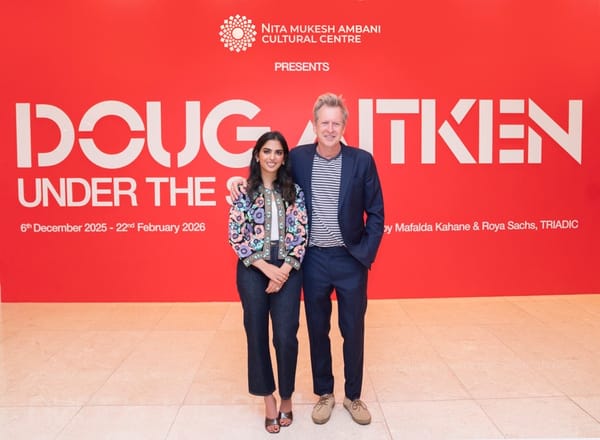Art History 101: A Beginner's Guide to Key Movements and Artists
Explore art history from ancient to contemporary times with our beginner's guide. Discover key movements and artists, from the Renaissance to Impressionism and beyond, and learn how art reflects cultural shifts, inspires creativity, and drives social change.

Art has been a fundamental part of human culture for thousands of years, serving as a reflection of society, a mode of expression, and a bridge between past and present. Through art, we can explore the stories of civilizations, understand the evolution of ideas, and witness the creativity that defines the human spirit.
This guide is designed for those who are new to the world of art history. It provides an overview of key movements and artists, taking you on a journey from ancient times to the contemporary era. Each movement represents a distinct period in art, often marked by specific styles, philosophies, and innovations. By examining these movements, you'll gain insight into the context in which artists created their works, the techniques they used, and the themes they explored.
Ancient Art
Art has been an essential part of human expression for millennia, with its roots stretching back to the dawn of civilization. Ancient art encompasses a wide range of cultures and traditions, each with its own distinctive styles, techniques, and symbolism. In this section, we explore some of the key civilizations that contributed to the development of early art.

Egyptian Art
Egyptian art is one of the most iconic and enduring forms of ancient art. It is characterized by its adherence to strict conventions, often reflecting religious beliefs and the afterlife. Common themes include gods and goddesses, pharaohs, and scenes from Egyptian mythology. Key elements include:
- Sculpture and Reliefs: Colossal statues, like those of Ramses II at Abu Simbel, and intricate wall reliefs in temples and tombs.
- Hieroglyphics: The Egyptian writing system, often used to tell stories and record historical events.
- Pyramids and Tombs: Massive architectural feats, such as the Great Pyramid of Giza, which served as monumental burial sites for pharaohs.

Greek Art
Greek art laid the foundation for Western artistic tradition, emphasizing realism, idealism, and harmony. It spanned multiple periods, each with its own focus. Key aspects include:
- Sculpture: The Classical Greek period produced lifelike sculptures, such as the Discobolus by Myron and the Venus de Milo.
- Pottery: Greek pottery was highly decorative, often depicting mythological scenes, and was used for both functional and ceremonial purposes.
- Architecture: The Greeks are known for their temples, such as the Parthenian Parthenon in Athens, featuring iconic columns and detailed friezes.
Roman Art
Roman art was heavily influenced by Greek art but evolved into a style of its own, emphasizing grandeur and functionality. Romans were adept at engineering and architecture, leading to monumental achievements. Important features include:
- Architecture and Engineering: The Romans built impressive structures like the Colosseum and aqueducts, demonstrating their engineering prowess.
- Sculpture: Roman sculptures often depicted emperors and military victories, exemplified by works like the Augustus of Prima Porta.
- Mosaics: Romans used mosaics to decorate floors and walls, creating intricate designs and vivid scenes.

Other Ancient Civilizations
While Egyptian, Greek, and Roman art are often the focus, other ancient civilizations made significant contributions to art history. Some notable examples include:
- Mesopotamian Art: Known for its cuneiform writing and ziggurats, with artefacts like the Stele of Hammurabi.
- Persian Art: Recognized for its intricate metalwork and grand palaces, exemplified by the ruins of Persepolis.
- Pre-Columbian Art: Includes the art of ancient civilizations in the Americas, such as the Mayans and Aztecs, known for their detailed carvings and monumental stone temples.
Ancient art provides a fascinating glimpse into the early development of human creativity and the enduring legacy of these early civilizations. Through their art, we can gain insight into their beliefs, values, and ways of life.

Medieval Art
Medieval art encompasses a period roughly from the 5th to the 15th century, marking the transition from the ancient world to the Renaissance. This era is often characterized by religious themes, intricate symbolism, and an evolving approach to art and architecture. The medieval period saw the rise of the Christian church as a dominant force in Europe, leading to a significant focus on religious subjects. Let's explore the key movements and styles within medieval art.

Byzantine Art
Byzantine art, primarily found in the Eastern Roman Empire, is known for its religious imagery, elaborate mosaics, and architectural grandeur. It thrived from the 5th to the 15th century and heavily influenced the art of the Orthodox Christian world. Key features of Byzantine art include:
- Icons: Sacred images of Christ, the Virgin Mary, and saints, often used in religious devotion. Icons like the "Theotokos of Vladimir" are iconic examples of this style.
- Mosaics: Intricate mosaics depicting biblical scenes and religious figures, found in churches like the Hagia Sophia in Istanbul.
- Architecture: Byzantine architecture often included domed churches, with the Hagia Sophia serving as a prime example of the grandeur and scale of this tradition.
Romanesque Art
Romanesque art emerged in Western Europe around the 10th century and continued until the 12th century. It is characterized by robust, solid architecture and a revival of large-scale sculpture. Romanesque art is often associated with the spread of monasteries and the construction of grand cathedrals. Key elements include:
- Architecture: Romanesque architecture is known for its thick walls, rounded arches, barrel vaults, and large towers. Churches like the Abbey of Cluny exemplify this style.
- Sculpture: Romanesque sculpture adorned church portals and capitals, often depicting biblical scenes and fantastical creatures.
- Illuminated Manuscripts: The art of bookmaking flourished during this period, with detailed illustrations and decorative initials in religious texts.

Gothic Art
Gothic art began in the 12th century and continued until the 15th century, marking the high point of medieval artistic achievement. It is known for its dramatic architecture, intricate sculpture, and detailed stained glass. Gothic art represented a shift toward greater verticality, light, and complexity. Key aspects include:
- Architecture: Gothic architecture is defined by pointed arches, ribbed vaults, and flying buttresses, allowing for taller and more open structures. Notable examples include Notre Dame Cathedral in Paris and Chartreuse Cathedral.
- Sculpture: Gothic sculpture, often found in cathedral façades and cloisters, depicted religious narratives with greater realism and emotion.
- Stained Glass: Stained glass became a hallmark of Gothic churches, illustrating biblical stories with vibrant colours and intricate designs.

Illuminated Manuscripts
Illuminated manuscripts were a significant form of medieval art, combining text with elaborate illustrations. These works were often religious in nature and produced by monks in monasteries. Some notable examples include:
- The Book of Kells: An illuminated manuscript from the 8th or 9th century, renowned for its intricate designs and ornate depictions of biblical stories.
- The Lindisfarne Gospels: Another significant manuscript from the early medieval period, known for its detailed artwork and decorative lettering.
Medieval art reflects a period of profound religious and cultural transformation, where art served as both a form of devotion and a means of conveying spiritual messages. Through these various movements and styles, medieval art laid the groundwork for the artistic innovations that would follow in the Renaissance.

Renaissance Art
The Renaissance, a term meaning "rebirth," was a period of profound cultural, artistic, and intellectual transformation in Europe, roughly spanning the 14th to the 17th centuries. This era saw the rediscovery and revitalization of classical art, literature, and philosophy, leading to a flourishing of creativity and innovation. Renaissance art is often associated with a renewed focus on humanism, realism, and a more scientific approach to the world. Let's explore the key characteristics and notable figures of this transformative period.

Early Renaissance
The Early Renaissance, occurring in the 14th and 15th centuries, marked the beginning of a new artistic approach that emphasized perspective, proportion, and a more naturalistic depiction of the human form. Key features include:
- Development of Perspective: Artists like Filippo Brunelleschi introduced linear perspective, allowing for realistic spatial depth in art.
- Rediscovery of Classical Forms: A revival of Greco-Roman aesthetics, leading to harmonious proportions and classical themes.
- Notable Artists: Giotto, often considered the first great Renaissance painter, emphasized naturalism and emotional expression. Masaccio, another prominent figure, advanced the use of perspective in his frescoes, such as "The Tribute Money."

High Renaissance
The High Renaissance represents the zenith of Renaissance art, with a focus on idealized beauty, harmony, and technical mastery. This period, which spanned the late 15th to early 16th centuries, saw the emergence of some of history's most celebrated artists. Key aspects include:
- Mastery of Technique: Artists achieved a level of technical skill that allowed for detailed, realistic, and emotionally resonant works.
- Idealization of the Human Form: The human body was depicted with a sense of proportion and beauty, reflecting classical ideals.
- Notable Artists: Leonardo da Vinci, one of the most famous artists in history, created iconic works like the "Mona Lisa" and "The Last Supper." Michelangelo, known for his sculptures like "David" and the Sistine Chapel ceiling, epitomized Renaissance ideals. Raphael, celebrated for his harmonious compositions, produced masterpieces like "The School of Athens."
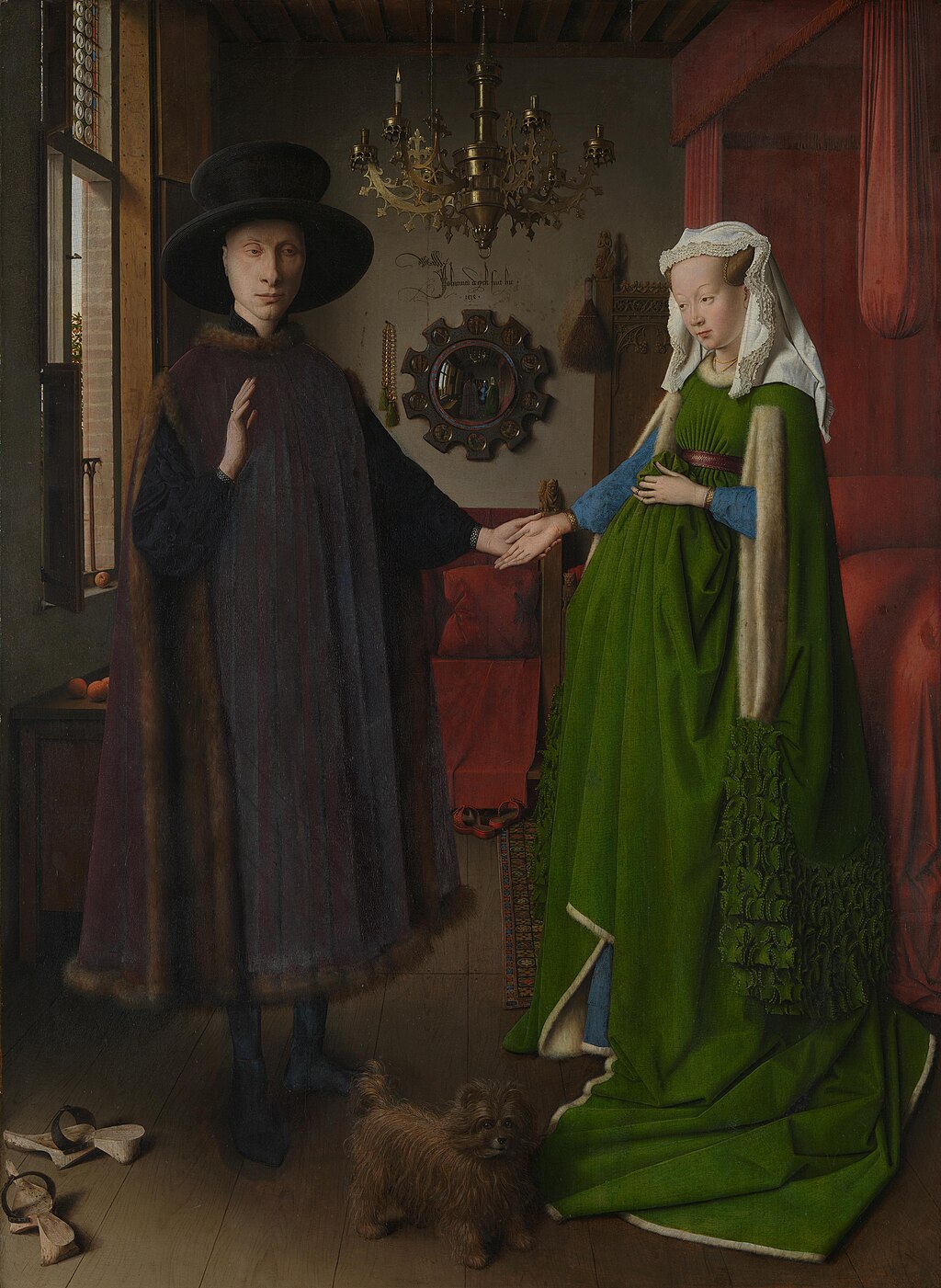
Northern Renaissance
While the Italian Renaissance is often the focus, the Northern Renaissance was equally significant, with its own unique characteristics. This movement, which spread across Northern Europe, emphasized detail, realism, and complex symbolism. Key features include:
- Attention to Detail: Artists in the Northern Renaissance were known for their meticulous attention to detail, particularly in their depiction of textures and fabrics.
- Religious Themes and Symbolism: The art often contained rich religious symbolism and allegory, reflecting the spiritual context of the time.
- Notable Artists: Jan van Eyck, a pioneer of oil painting, created the renowned "Arnolfini Portrait." Albrecht Dürer, known for his engravings and woodcuts, combined the Northern and Italian Renaissance styles. Hieronymus Bosch, with his fantastical imagery, produced the iconic "Garden of Earthly Delights."
Renaissance art represents a pivotal moment in the history of art, where creativity and innovation flourished, laying the groundwork for future artistic movements and shaping the way we view art to this day. It remains a source of inspiration and admiration, reminding us of the enduring power of human creativity and the quest for beauty and understanding.

Baroque and Rococo Art
The Baroque and Rococo periods represent two distinctive but related eras in European art history. Baroque art, emerging in the 17th century, is known for its dramatic intensity, emotional depth, and grandeur. It was a direct response to the religious and political tensions of the time, often associated with the Counter-Reformation. Rococo art, which followed in the early 18th century, brought a lighter, more playful approach, focusing on elegance and decoration. This section explores these two contrasting but interconnected styles.

Baroque Art
Baroque art is characterized by its dramatic use of light and shadow, bold movement, and emotional intensity. It was often used to inspire religious devotion and awe, aligning with the Catholic Church's efforts during the Counter-Reformation. Key elements of Baroque art include:
- Dynamic Composition: Baroque artists often employed dynamic and complex compositions, creating a sense of movement and energy.
- Use of Chiaroscuro: The dramatic contrast between light and dark, also known as chiaroscuro, was a hallmark of Baroque painting, adding depth and drama to the scenes.
- Emotional Expressiveness: Baroque art frequently depicted intense emotions, whether in religious, mythological, or portrait subjects.
- Notable Artists:
- Caravaggio: Known for his dramatic use of chiaroscuro and realistic depictions of biblical scenes, like "The Calling of St. Matthew."
- Rembrandt van Rijn: A master of light and shadow, his works like "The Night Watch" exemplify the power of Baroque art.
- Gian Lorenzo Bernini: A prominent sculptor and architect, known for his dynamic sculptures such as "The Ecstasy of Saint Teresa" and the grand designs of St. Peter's Basilica.

Baroque Architecture
Baroque architecture reflects the grandeur and drama of the period, with a focus on monumental structures and elaborate decoration. Key features include:
- Grand Scale: Baroque architecture is often massive and imposing, designed to impress and inspire awe.
- Ornate Decoration: Intricate details, such as elaborate stucco work and frescoes, were common in Baroque buildings.
- Famous Examples:
- St. Peter's Basilica in Vatican City, with its expansive dome and grand interiors.
- Versailles Palace in France, known for its opulent design and extensive gardens.
Rococo Art
Rococo art emerged in the early 18th century, primarily in France, as a reaction against the heavy intensity of Baroque. It is characterized by its lighter, more playful style, with an emphasis on elegance and ornate decoration. Key elements of Rococo art include:
- Delicate Ornamentation: Rococo art is known for its intricate and delicate details, often resembling organic forms like shells and leaves.
- Pastel Colours: A lighter colour palette, with an emphasis on soft pastels and subtle shading, distinguishes Rococo from the darker tones of Baroque.
- Themes of Romance and Leisure: Rococo art often depicted scenes of courtly life, love, and leisure, with a playful and flirtatious tone.
- Notable Artists:
- François Boucher: Known for his romantic and pastoral scenes, like "The Toilet of Venus."
- Jean-Honoré Fragonard: His painting "The Swing" epitomizes the playful and flirtatious nature of Rococo.
- Thomas Gainsborough: An English painter who embraced Rococo's elegance and charm, as seen in "The Blue Boy."

Rococo Architecture and Decorative Arts
Rococo also influenced architecture and decorative arts, leading to highly ornate interiors and decorative objects. Key features include:
- Interior Decoration: Rococo interiors were lavishly decorated with ornate mirrors, delicate woodwork, and detailed frescoes.
- Decorative Arts: Rococo extended to furniture, porcelain, and other decorative objects, showcasing intricate craftsmanship and elegant design.
- Famous Examples:
- The Palace of Versailles' interior after its Rococo makeover, with its opulent decorations.
- The Amalienburg in Munich, known for its lavish Rococo interiors and decorative details.
Baroque and Rococo art represent two distinct yet connected approaches to art and architecture, each reflecting the cultural shifts of their time. While Baroque embraced drama and intensity, Rococo embraced elegance and playfulness, providing a diverse array of artistic expressions during these vibrant periods in art history.

Neoclassicism and Romanticism
The late 18th and early 19th centuries were periods of significant change in art and culture. Neoclassicism and Romanticism represent two contrasting yet complementary artistic movements that emerged in this era, reflecting shifting cultural values and the evolving relationship between art and society. Neoclassicism looked to the classical past for inspiration, emphasizing order, harmony, and restraint, while Romanticism celebrated emotion, imagination, and individualism.

Neoclassicism
Neoclassicism, which began in the mid-18th century, was inspired by the art and culture of ancient Greece and Rome. It developed as a reaction against the excesses of Baroque and Rococo, embracing a more restrained and structured approach to art. Key features of Neoclassicism include:
- Classical Themes: Neoclassical artists often depicted scenes from ancient mythology, history, and literature, emphasizing ideals of heroism and virtue.
- Simplicity and Order: Neoclassical art is characterized by clean lines, balanced compositions, and a focus on symmetry.
- Notable Artists:
- Jacques-Louis David: A leading Neoclassical painter known for his dramatic and heroic compositions, such as "The Death of Socrates" and "The Oath of the Horatii."
- Jean-Auguste-Dominique Ingres: Known for his precise technique and classical themes, Ingres created works like "Grande Odalisque."
- Antonio Canova: A renowned sculptor who produced graceful and elegant sculptures like "Psyche Revived by Cupid's Kiss."

Neoclassical Architecture
Neoclassical architecture, like its artistic counterpart, drew inspiration from ancient Greece and Rome, emphasizing grandeur and simplicity. Key features include:
- Classical Elements: Neoclassical architecture often incorporated Greek and Roman elements, such as columns, pediments, and domes.
- Symmetry and Proportion: Neoclassical buildings are designed with a focus on balance and harmony.
- Famous Examples:
- The Parthenon in Nashville, Tennessee: A full-scale replica of the ancient Greek Parthenon.
- The United States Capitol: With its grand dome and classical columns, it exemplifies Neoclassical architecture.

Romanticism
Romanticism emerged in the late 18th century as a reaction against the rationality and order of Neoclassicism, celebrating emotion, imagination, and the sublime in nature. Romantic art often explored themes of individualism, fantasy, and a connection to nature. Key elements of Romanticism include:
- Emotion and Imagination: Romantic artists embraced intense emotion and imagination, often depicting dramatic landscapes and historical scenes.
- Celebration of Nature: Romanticism highlighted the beauty and power of nature, emphasizing the sublime and its impact on human emotion.
- Notable Artists:
- J.M.W. Turner: A British painter known for his dramatic landscapes and use of light, with works like "The Fighting Temeraire" and "Rain, Steam, and Speed."
- Eugène Delacroix: A French Romantic painter recognized for his expressive use of colour and dynamic compositions, as seen in "Liberty Leading the People."
- Caspar David Friedrich: A German Romantic painter who explored the spiritual and emotional aspects of nature in works like "Wanderer above the Sea of Fog."
Romanticism in Literature and Music
Romanticism also had a significant impact on literature and music, where themes of emotion, fantasy, and individualism were prevalent. Key aspects include:
- Romantic Literature: Writers like Lord Byron, Mary Shelley, and Edgar Allan Poe explored themes of love, nature, and the macabre.
- Romantic Music: Composers like Ludwig van Beethoven and Franz Schubert created music that emphasized emotion and dramatic expression.
Neoclassicism and Romanticism, though distinct in their approaches, represent important periods in art history. While Neoclassicism looked to the classical past for order and harmony, Romanticism embraced the complexity of human emotion and the beauty of nature. Together, these movements demonstrate the diverse and evolving nature of art as it responds to cultural and historical changes.

Impressionism and Post-Impressionism
Impressionism and Post-Impressionism represent significant departures from traditional art forms, marking the transition to modern art in the late 19th century. Impressionism is characterized by its focus on capturing the fleeting effects of light and colour, while Post-Impressionism builds on this foundation with a broader range of artistic experimentation. These movements reflect a time of rapid social and technological change, resulting in a new approach to artistic expression.
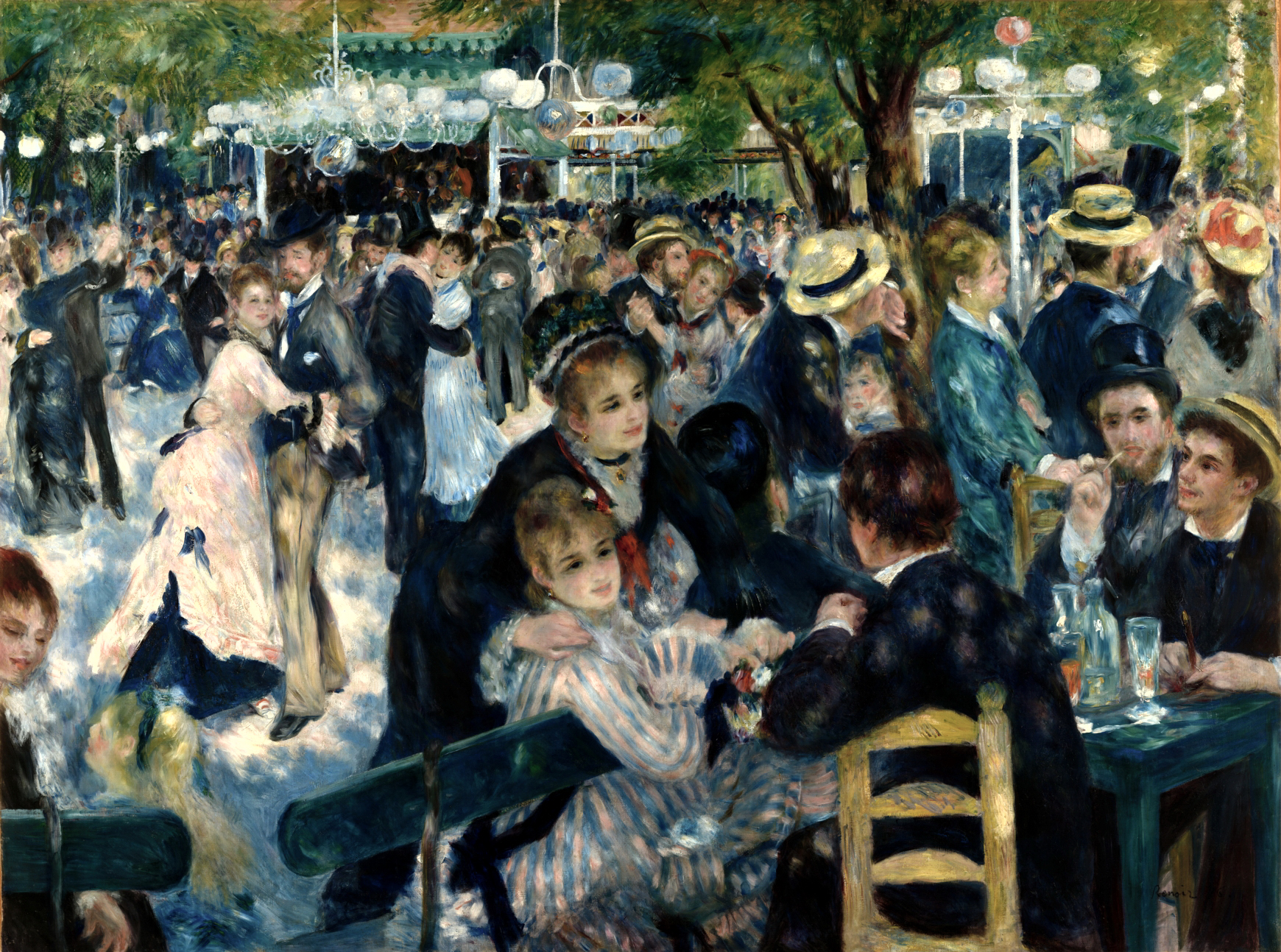
Impressionism
Impressionism emerged in France in the 1860s and 1870s as a reaction against the rigid rules of academic art. Impressionist artists sought to capture moments in time, emphasizing light, colour, and everyday scenes. Key features of Impressionism include:
- Loose Brushstrokes: Impressionists used quick, loose brushstrokes to capture the immediacy of a scene, creating a sense of spontaneity.
- Focus on Light and Colour: The play of light and colour was central to Impressionism, with artists exploring how light changes throughout the day.
- Everyday Subjects: Impressionists often depicted scenes from ordinary life, such as city streets, parks, and cafes, rather than grand historical or mythological themes.
- Notable Artists:
- Claude Monet: Considered the father of Impressionism, Monet is known for his series of paintings depicting water lilies and his iconic "Impression, Sunrise."
- Pierre-Auguste Renoir: Renoir's work is characterized by its warm tones and depictions of social scenes, such as "Dance at Le Moulin de la Galette."
- Edgar Degas: Known for his studies of ballet dancers and intimate scenes, Degas combined Impressionist techniques with traditional draftsmanship.

Impressionist Techniques and Influence
Impressionism had a profound impact on the art world, influencing the course of modern art. Key techniques and aspects of Impressionism include:
- Plein Air Painting: Impressionists often painted outdoors to capture the effects of natural light, a practice known as plein air painting.
- Experimental Composition: Impressionists experimented with unconventional compositions, such as asymmetrical arrangements and cropped views.
- Impact on Future Movements: Impressionism paved the way for later movements, such as Post-Impressionism, and inspired artists around the world.
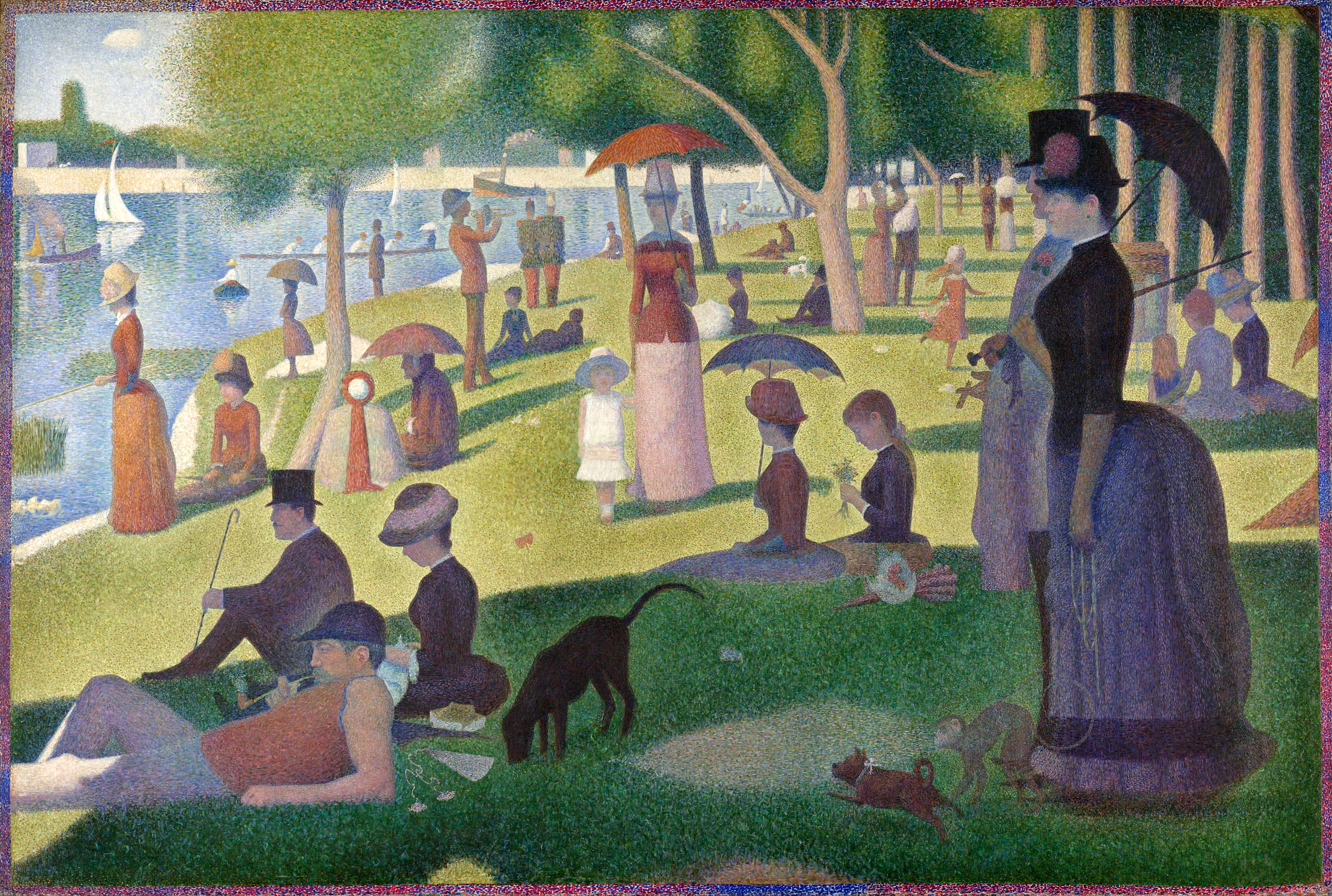
Post-Impressionism
Post-Impressionism emerged in the late 19th century as artists began to explore new directions beyond the impressionistic style. While Impressionism focused on capturing fleeting moments, Post-Impressionism embraced a broader range of artistic exploration, emphasizing structure, symbolism, and emotional expression. Key features of Post-Impressionism include:
- Exploration of Colour and Form: Post-Impressionists experimented with vibrant colours and more structured forms, moving away from Impressionism's loose brushstrokes.
- Personal Expression: Artists began to infuse their work with personal symbolism and emotional depth, reflecting their own perspectives and experiences.
- Notable Artists:
- Vincent van Gogh: Known for his intense colours and emotive brushstrokes, van Gogh's work, such as "Starry Night," became iconic in its emotional intensity.
- Paul Gauguin: Gauguin's art often explored exotic themes and symbolism, as seen in "Where Do We Come From? What Are We? Where Are We Going?"
- Georges Seurat: Seurat's technique of pointillism, where small dots of colour create a cohesive image, is exemplified in "A Sunday Afternoon on the Island of La Grande Jatte."
- Paul Cézanne: Known for his exploration of form and structure, Cézanne's work, like "Mont Sainte-Victoire," laid the groundwork for Cubism and modern art.
Impressionism and Post-Impressionism represent a pivotal shift in the history of art, demonstrating a new willingness to break away from established conventions and explore new forms of expression. These movements, with their focus on light, colour, and individual perspective, continue to inspire artists and art lovers worldwide.

Modern Art
Modern art represents a radical departure from traditional art forms and conventions. It encompasses a diverse range of styles, movements, and philosophies that emerged during the late 19th and early 20th centuries, characterized by innovation, abstraction, and a desire to challenge the status quo. Modern art reflects the rapid social, technological, and political changes of the time, leading artists to experiment with new materials, techniques, and ideas. In this section, we explore some of the key movements and influential figures in modern art.

The Roots of Modern Art
Modern art began to take shape in the late 19th century, as artists sought to break away from established academic traditions. Key aspects of this early phase include:
- Rejection of Realism: Modern artists moved away from strict realism, exploring abstraction and unconventional forms.
- Exploration of New Materials: Innovations in art materials and techniques allowed artists to experiment and push boundaries.
- Influential Figures:
- Vincent van Gogh: Known for his expressive brushstrokes and vibrant colours, van Gogh laid the groundwork for modern expressionism.
- Paul Cézanne: Cézanne's focus on geometric shapes and structural elements influenced later movements like Cubism.
- Henri Matisse: A leading figure in Fauvism, Matisse's use of bold colours and simplified forms became a hallmark of modern art.

Cubism
Cubism, one of the most influential modern art movements, emerged in the early 20th century. It is characterized by fragmented forms and multiple perspectives, reflecting a new approach to depicting reality. Key features of Cubism include:
- Fragmentation: Cubism breaks down objects into geometric shapes, presenting them from multiple angles simultaneously.
- Analytical and Synthetic Cubism: Analytical Cubism focuses on deconstructing forms into geometric shapes, while Synthetic Cubism uses collage and mixed media to create new compositions.
- Notable Artists:
- Pablo Picasso: One of the founders of Cubism, Picasso's work, such as "Les Demoiselles d'Avignon," revolutionized art.
- Georges Braque: A co-founder of Cubism, Braque's collaborations with Picasso helped define the movement.
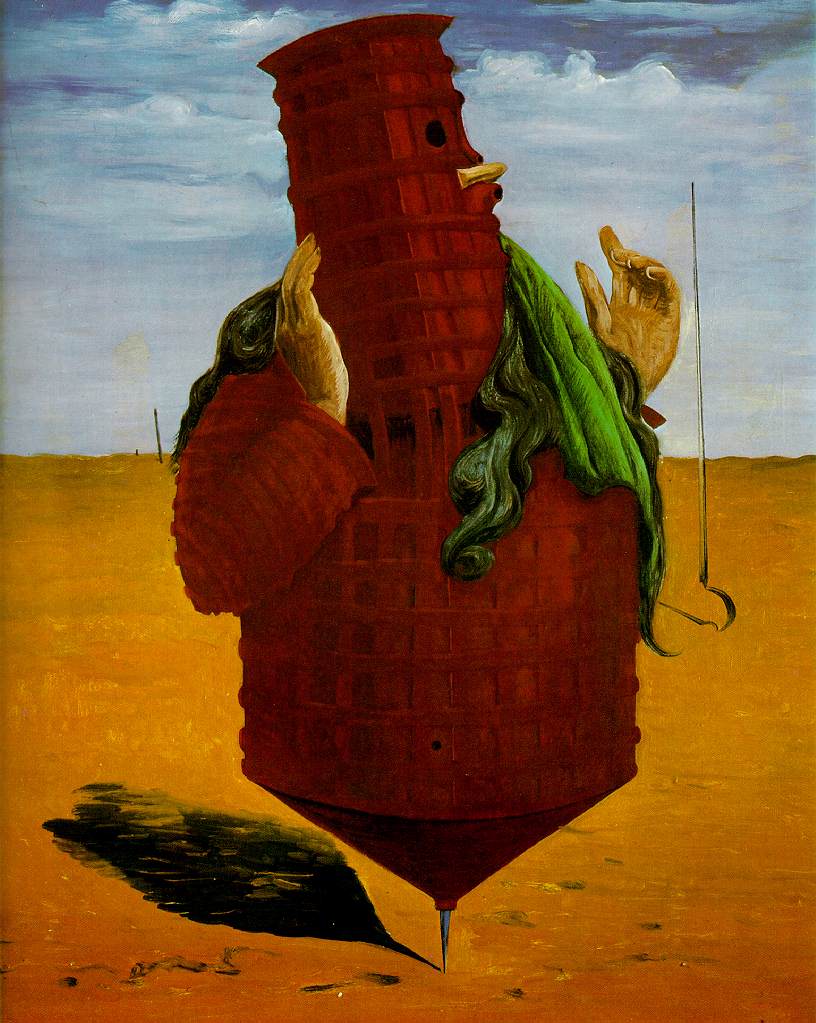
Surrealism
Surrealism, which emerged in the 1920s, explored the realm of dreams and the subconscious mind. Surrealist art is known for its fantastical imagery and unconventional juxtapositions, challenging the boundaries of reality. Key features of Surrealism include:
- Dreamlike Imagery: Surrealist artists often depicted bizarre and fantastical scenes, drawing on dream symbolism and subconscious thought.
- Automatism: A technique used by Surrealists to create art without conscious control, allowing for spontaneous and unexpected results.
- Notable Artists:
- Salvador Dalí: Known for his surreal and often bizarre imagery, Dalí's works like "The Persistence of Memory" have become iconic.
- René Magritte: Magritte's art often explores the relationship between reality and perception, as seen in "The Treachery of Images."
- Max Ernst: A key figure in Surrealism, Ernst's work combines elements of collage and dreamlike imagery.
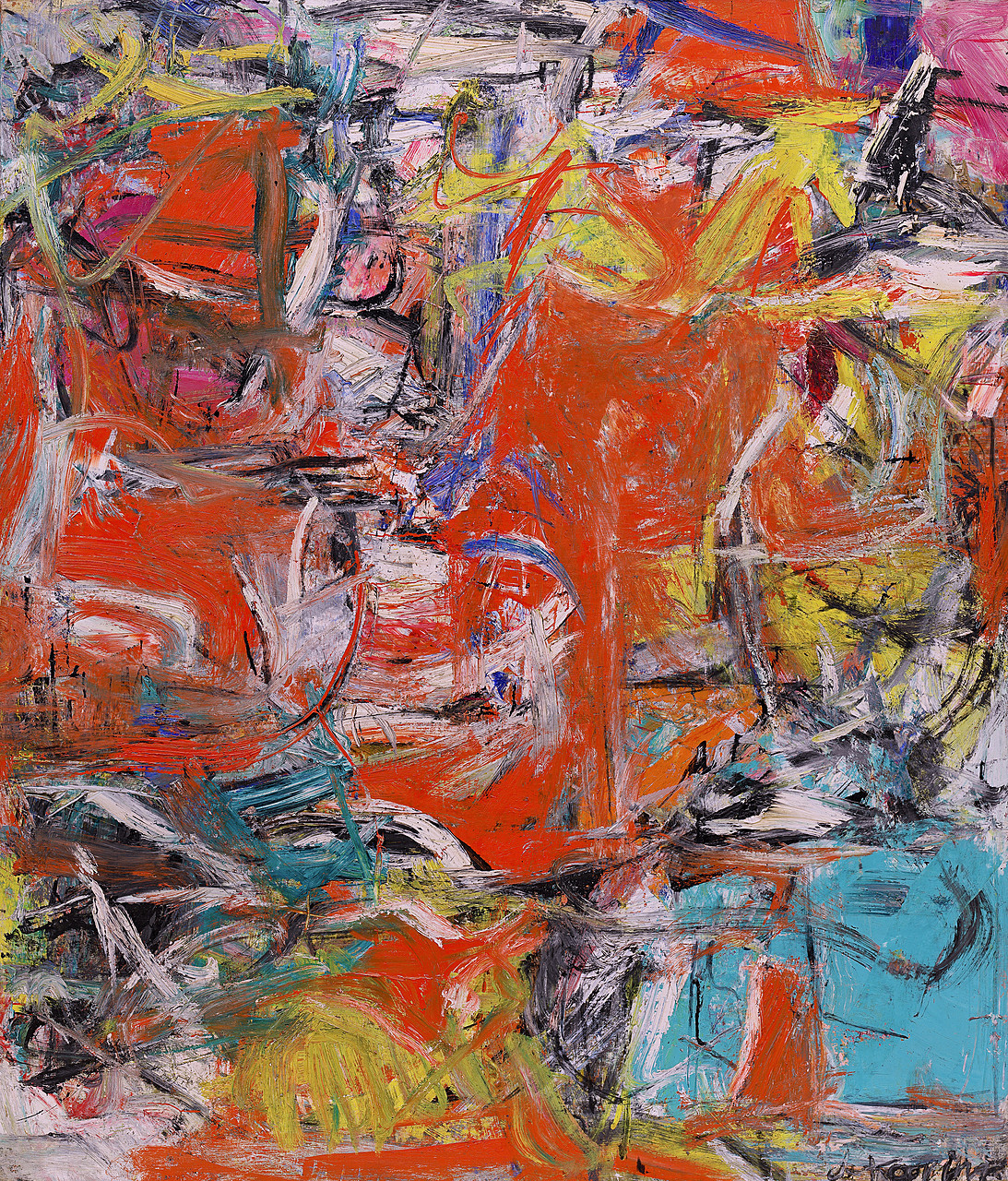
Abstract Expressionism
Abstract Expressionism, which developed in the United States in the 1940s and 1950s, is known for its emphasis on spontaneity and abstract forms. It represents a shift from representational art to more abstract and expressive styles. Key features of Abstract Expressionism include:
- Gestural Abstraction: Abstract Expressionist artists often used bold, dynamic brushstrokes to create energetic compositions.
- Emotional Intensity: This movement is characterized by a focus on emotion and personal expression, with an emphasis on the artist's inner experience.
- Notable Artists:
- Jackson Pollock: Known for his "drip paintings," Pollock's technique involved pouring or dripping paint onto a canvas, creating chaotic yet cohesive patterns.
- Mark Rothko: Rothko's large-scale colour field paintings, with their expansive swaths of colour, convey a sense of emotional depth.
- Willem de Kooning: A leading figure in Abstract Expressionism, de Kooning's gestural style combines abstraction with figurative elements.

Modern Art Movements and Impact
Modern art encompasses a wide range of movements, each contributing to the evolution of art in the 20th century. Beyond Cubism, Surrealism, and Abstract Expressionism, other significant movements include:
- Fauvism: Characterized by bold colours and expressive brushstrokes, Fauvism laid the groundwork for modern abstraction.
- Dada: A movement that challenged conventional art by embracing absurdity and randomness.
- Pop Art: Emerging in the 1950s and 1960s, Pop Art used imagery from popular culture and consumerism, exploring the relationship between art and mass media.
Modern art represents a dynamic and innovative period in art history, where artists broke away from tradition and embraced new ideas. The movements and artists from this era continue to influence contemporary art, showcasing the enduring impact of the modern art revolution.

Contemporary Art
Contemporary art encompasses a vast array of styles, mediums, and approaches, reflecting the diverse and globalized nature of the art world from the late 20th century to the present. Unlike previous movements, contemporary art is characterized by its multiplicity of voices, experimentation with new technologies, and exploration of social and political themes. This section explores the key trends, movements, and artists that define contemporary art, highlighting its dynamic and evolving nature.
Characteristics of Contemporary Art
Contemporary art is challenging to define due to its broad scope and rapid evolution. However, several key characteristics help distinguish it from earlier art movements:
- Diversity of Mediums: Contemporary artists use a wide range of materials, from traditional paints and sculpture to digital media, installations, and performance art.
- Global Perspective: Contemporary art reflects a more global perspective, with artists from diverse cultural backgrounds and geographic locations.
- Social and Political Engagement: Contemporary art often explores social, political, and environmental themes, addressing issues such as identity, gender, race, and climate change.
- Interdisciplinary Approaches: Contemporary artists frequently blend different disciplines, integrating art, technology, science, and popular culture.

Major Contemporary Art Movements
Several significant movements have shaped contemporary art, each contributing to its diverse and experimental character. Some of these include:
- Pop Art: While originating in the mid-20th century, Pop Art continues to influence contemporary artists. It explores themes of consumerism and popular culture, with iconic figures like Andy Warhol and Roy Lichtenstein.
- Conceptual Art: Conceptual Art focuses on ideas and concepts rather than traditional aesthetics. Artists like Marcel Duchamp and Joseph Kosuth emphasized that the idea behind the art could be as important as the physical artwork itself.
- Minimalism: Characterized by simplicity and reduction, Minimalism explores the essence of art with a focus on form and colour. Artists like Donald Judd and Dan Flavin exemplify this approach.
- Street Art: Originating from graffiti culture, Street Art has become a significant contemporary art movement. Artists like Banksy and Shepard Fairey use public spaces to create politically charged and socially relevant art.

Influential Contemporary Artists
Contemporary art features a wide range of artists who have made significant contributions to the art world. Some notable figures include:
- Yayoi Kusama: Known for her immersive installations and use of repetitive patterns, Kusama's work explores themes of infinity and the self.
- Ai Weiwei: A Chinese artist and activist, Ai Weiwei uses his art to address political and social issues, often challenging authority and censorship.
- Damien Hirst: A leading figure in the Young British Artists movement, Hirst's work explores themes of life, death, and consumerism through unconventional materials and provocative installations.
- Marina Abramović: A pioneering performance artist, Abramović's work focuses on endurance, human connection, and the boundaries between artist and audience.

Contemporary Art Practices and Technology
Contemporary art has embraced new technologies and practices, leading to innovative and experimental works. Key trends in contemporary art practices include:
- Digital Art: The use of digital technology in art has expanded, with artists exploring virtual reality, augmented reality, and digital installations.
- Installation Art: Installation art involves large-scale works that transform spaces, often requiring viewer interaction and engagement.
- Performance Art: Performance art has gained prominence, with artists using their bodies and actions as the medium of expression.
- Art and Social Media: Social media platforms have transformed how art is shared and consumed, allowing artists to reach global audiences and connect with viewers in new ways.
Contemporary art is a vibrant and ever-evolving field, representing the diversity and complexity of the modern world. It continues to push boundaries, challenge conventions, and reflect the broad range of human experiences. By exploring contemporary art, we gain insights into the issues and ideas that shape our time and the role of art in addressing them.

Conclusion
Art history takes us on a journey through time, showcasing the diverse styles, movements, and artists that have shaped our visual culture. From ancient sculptures to Renaissance masterpieces and contemporary innovations, each era reflects its unique values and challenges.
Key periods like Impressionism, Post-Impressionism, Modern Art, and Contemporary Art reveal how artists pushed boundaries and embraced new ideas. Figures like Michelangelo, Claude Monet, Pablo Picasso, and Yayoi Kusama demonstrated art's power to provoke thought, inspire emotion, and drive cultural change.
Art evolves with each generation, serving as a mirror to society, a platform for social commentary, and a source of inspiration.




